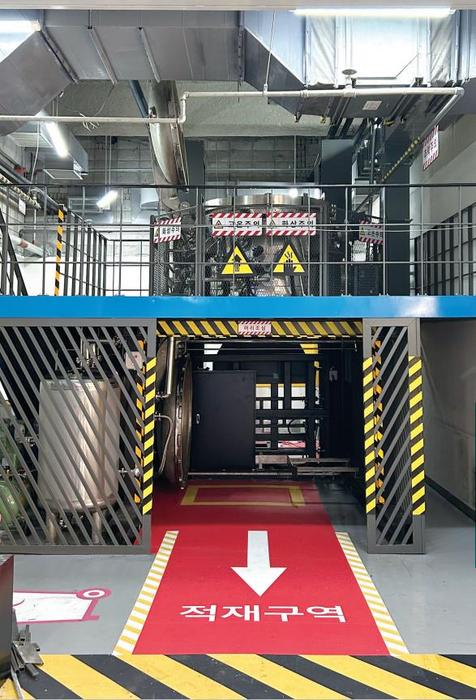RIVERSIDE, Calif. — A study led by researchers in the School of Medicine at the University of California, Riverside, has found that in communities of color in Inland Southern California, historical, cultural, and social traumas induce fear and mistrust in public health and medical, scientific, and governmental institutions, which, in turn, influence these communities’ hesitation to get tested and vaccinated for COVID-19.
The study, published in Culture, Medicine, and Psychiatry, underscores the need for community-based health interventions that consider structural and social determinants of health to address such traumas experienced by racial/ethnic minority populations in the U.S.
From January to March 2021, the researchers, led by Ann Cheney, an associate professor of social medicine, population, and public health, conducted 11 virtual focus groups (5-10 people attended each focus group) who identified as Black/African American, Latinx/Indigenous Latin American, and/or Native American/Indigenous. Participants shared information on the cultural and structural factors that shaped their COVID-19 testing and vaccination.
“We found the intersection of historical, cultural, and social traumas contributed to fear and mistrust in institutions — government, medicine, and public health,” Cheney said. “These different levels of trauma intersect and shape decision-making around COVID-19 testing and vaccination in the current pandemic.”
Evelyn Vázquez, the first author of the research paper and a community psychologist, led the data analysis of the 11 focus groups and used the findings to develop a theoretical model, called the “Continuum of Trauma,” to show how the different types of trauma shape COVID-19-related decisions among disadvantaged populations. The model crosses temporal, cultural, and social spaces among communities of color.
“This model describes the shared grief, assault on collective identity, and marginalization among racial and ethnic minorities in Inland Southern California,” said Vázquez, an assistant professional researcher in the Department of Social Medicine, Population, and Public Health. “We found that collective experiences of trauma across the continuum have induced fear, hesitancy, and institutional mistrust among marginalized communities.”
Key findings from the focus groups:
- All participants discussed historically based trauma as grounded in structural racism and histories of government and public health abuses.
- Black/African American and Native American/Indigenous community participants talked about the U.S. government’s falsehoods and lies.
- Latinx/Indigenous Latin American community members spoke about classism they faced, the loss of religious leaders during the pandemic, fear and mistrust in public health, and fear of job loss.
- All participants shared how the COVID-19 pandemic affected their collective identity.
- All participants found social trauma and racial- and income-based inequities were pronounced in the current pandemic.
- Many faced job-related stress, childcare concerns, and housing inequities.
- Many experienced discrimination in health-care settings.
- Many distrusted government institutions, feared seeking medical care, and were reluctant to get tested and vaccinated for COVID-19.
“Trauma exists along a continuum and contributes during the COVID-19 pandemic to health disparities as well as fear and mistrust in institutions,” Vázquez said. “For collective healing, we need community-based approaches. For example, transformative interventions that impinge upon structural and social determinants of health can address the fear and mistrust of institutions.”
Vázquez explained that this fear and mistrust stem from historical trauma and colonizing practices in the history of medicine.
“Fear and mistrust are also linked to cruelty enacted by the U.S. government towards racial/ethnic minorities and loss of community elders and their knowledge,” she said.
Cheney stressed that interventions could transform three types of power in historically marginalized groups: political, economic, and social.
“Interventions can promote community-level health equity and freedom from trauma by promoting health education and literacy and providing access to community-based interventions developed by communities of color for communities of color,” she said. “To succeed, interventions must be culturally sensitive and responsive.”
Cheney and Vázquez were joined in the study by Michelle Burroughs of UCR, Preeti Juturu of UCLA, and Juliet McMullin of UC Irvine.
The research paper is titled “Continuum of Trauma: Fear and Mistrust of Institutions in Communities of Color During the COVID-19 Pandemic.”
The University of California, Riverside is a doctoral research university, a living laboratory for groundbreaking exploration of issues critical to Inland Southern California, the state and communities around the world. Reflecting California’s diverse culture, UCR’s enrollment is more than 26,000 students. The campus opened a medical school in 2013 and has reached the heart of the Coachella Valley by way of the UCR Palm Desert Center. The campus has an annual impact of more than $2.7 billion on the U.S. economy. To learn more, visit www.ucr.edu.
Journal
Culture Medicine and Psychiatry
DOI
10.1007/s11013-023-09835-3
Method of Research
Survey
Subject of Research
People
Article Title
Continuum of Trauma: Fear and Mistrust of Institutions in Communities of Color During the COVID-19 Pandemic
Article Publication Date
30-Sep-2023
COI Statement
Authors declare no COI.






































